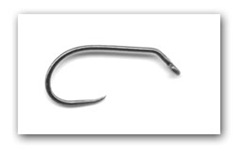I had another chat with Kevin Compton the distributor for the Dohiku and Grip hook lines and was reminded to check up on our my favorite subject, competitive fly fishing.
My contention has always been that all real evolution in tackle is occurring due to the competitive angler – and us hobbyists are pretty content with the current state of rods, lines, flies, and fly fishing sundries.
Considering we’re enjoying rods and tackle whose roots are in the Space Race – competition merely showcases the trends and materials early. American manufacturers hindered by our reluctance to embrace the competition aspects probably scowl as did “Fatso” Goering, when he asked Adolf Galland what was needed to win the Battle of Britain..
“Finally, as his time ran short, he grew more amiable and asked what were the requirements for our squadrons. Moelders asked for a series of Me109’s with more powerful engines. The request was granted. ‘And you ?’ Goering turned to me. I did not hesitate long. ‘I should like an outfit of Spitfires for my group.’ “
… it must be tough on the Sage rep to walk off as the American team wave their Italian rods , but the B.A.S.S. circuit knows a sponsor when it sees one – and will be thrilled to wear the Sage decal.
Competition is by nature secretive and ever changing – the only reason the Bassmaster’s winner divulges his secret bait is because he has to – and digging up information on contemporary competitive tackle is like pulling teeth – at best you get what worked last year.
Jiri Klima “googles” nicely – the Czech fishing coach introduced a line of jig hooks and pre-weighted nymph forms unlike the “shrimp” style seen in past years. These are turned into Caddis jigs versus the more traditional nymph tie.
Naturally we’re clutching our chest in horror, “jigs” being the Devil’s handiwork and proof the competitive instinct is damning our sport to perdition.
I don’t see it that way.

.. now that the French are using semi-automatic reels it’s time to crack out all those old Martin wind-ups, as what’s old is new again.
Makes those tie-dye Abel’s look mighty drab – but scrimshaw will do that to you. The above Vivarelli Grayling runs just a bit under $1200, with the more mundane models, made from carbon fiber, around $250.
Nope, there’s no US maker with anything similar.
Eleven foot three weights are exciting to many, but competition is having its greatest impact on hook development. The absorption of the Redditch-based Partridge by Mustad marked a low point in fly hooks, the remaining manufacturers offering little variety and nothing but established styles.
Something as simple as a nickel/chrome hook for Shad or Steelhead left only Eagle Claw’s 1197N as the sole silver hook available. Targus has added one more in the 3908T – a replacement for the traditional Mustad 3908C that was swept under the carpet with all the other “marginal” sellers.
 While the Clouser minnow allowed fly tiers to consider jig hooks for streamers, the Czech nymph crowd have introduced the Nymph Special, a bent shank nymph hook designed specifically for bead usage.
While the Clouser minnow allowed fly tiers to consider jig hooks for streamers, the Czech nymph crowd have introduced the Nymph Special, a bent shank nymph hook designed specifically for bead usage.
Debarbing a traditional Model Perfect bend-forged wire hook has always been problematic; forged wire is much more brittle than its round wire equivalent – and the Model Perfect bend is the poorest for purchase and retention in fish flesh.
Sproat and modified Sproat dry fly hooks in round wire replace those missing short shanked Mustad’s like the 7957B and 7948A – both considered nymph hooks yet set the standard for tying our heavy water (large fish) western dry flies like the Humpy and many others.
Seeing the reintroduction of small niche players means big dividends for the rest of us. They’ll struggle with production, temper, wire, and all the other ills of hook making – but they offer us some interesting diversity – sorely lacking on the shelves now.
The upturned beak point, kirbed points, and elongated “spear” style looks like it’ll address many of the barbless issues we’ve had in the past. Especially those makers that yanked the barb off their standard hook with no thought to redesigning point and bend to compensate.
I’ll be testing some of the styles from Knapek, Skalka, and Dohiku, in an upcoming article – I just need to learn Yugoslav and Czech first … maybe some Japanese as well.

Looks like I have Item #45 on my Birthday wish list now! Can’t wait to get that reel in my hands…nice!
That’s a beautiful reel, but the lever is on the wrong dang side! Stupid frogs.
I was hoping someone would notice that – agreed, can’t imagine what them fellows were thinking.
I’m am looking to try to do some scrimshaw on some fly rod handles I make.
I am looking for some may fly or caddis patterns thar I can work with.
Would you have them or know who dose.
Thank You,
Mike sample